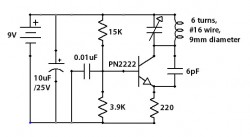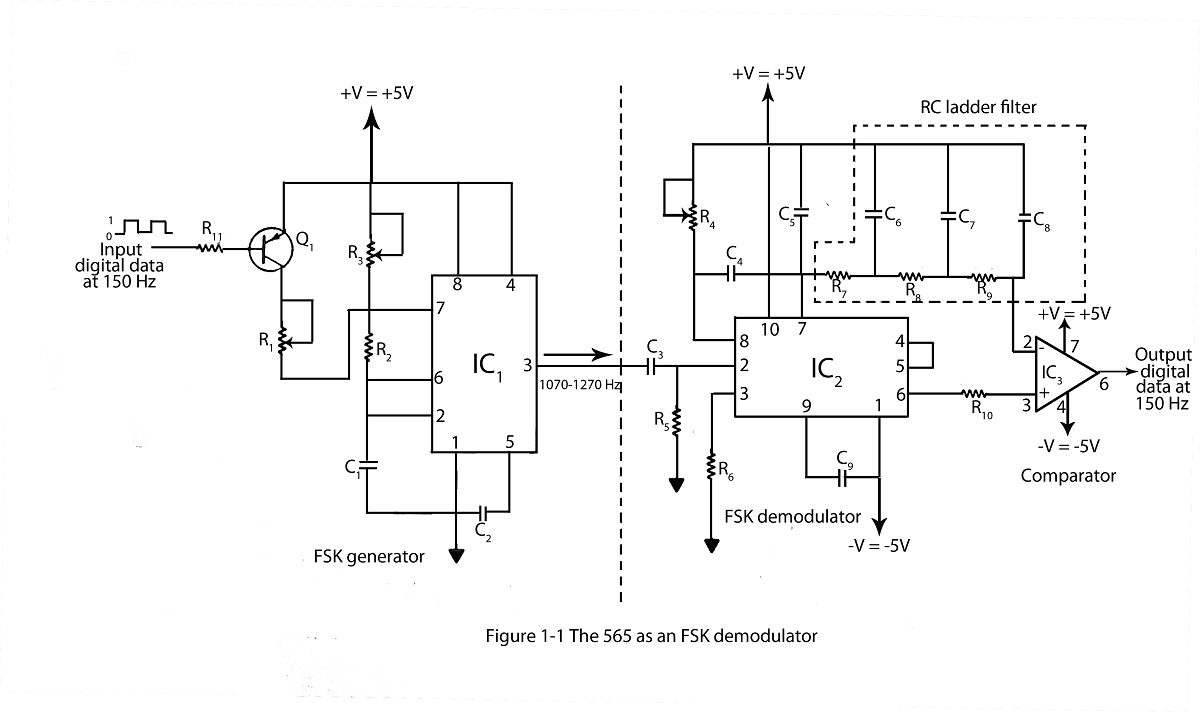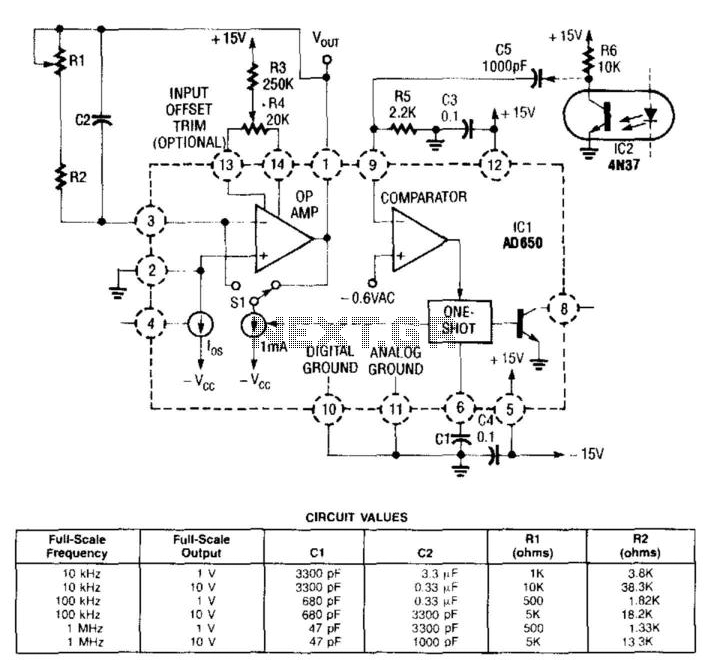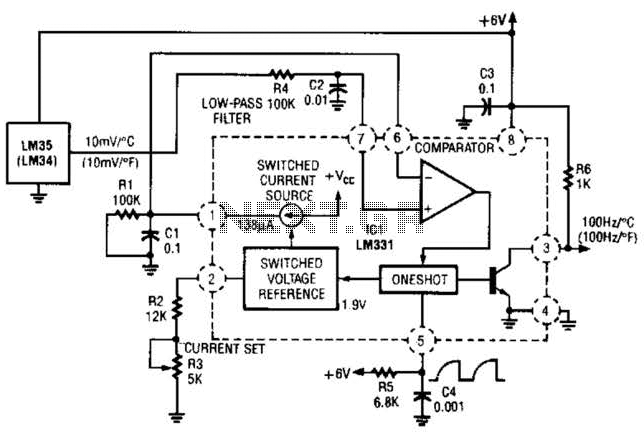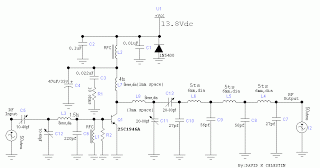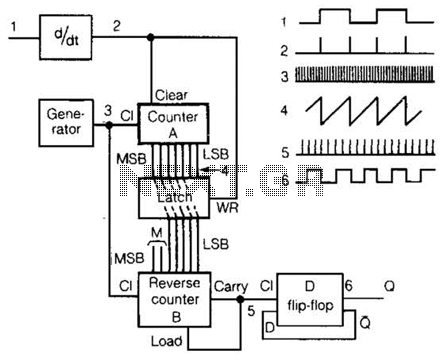
Mains Frequency Monitor
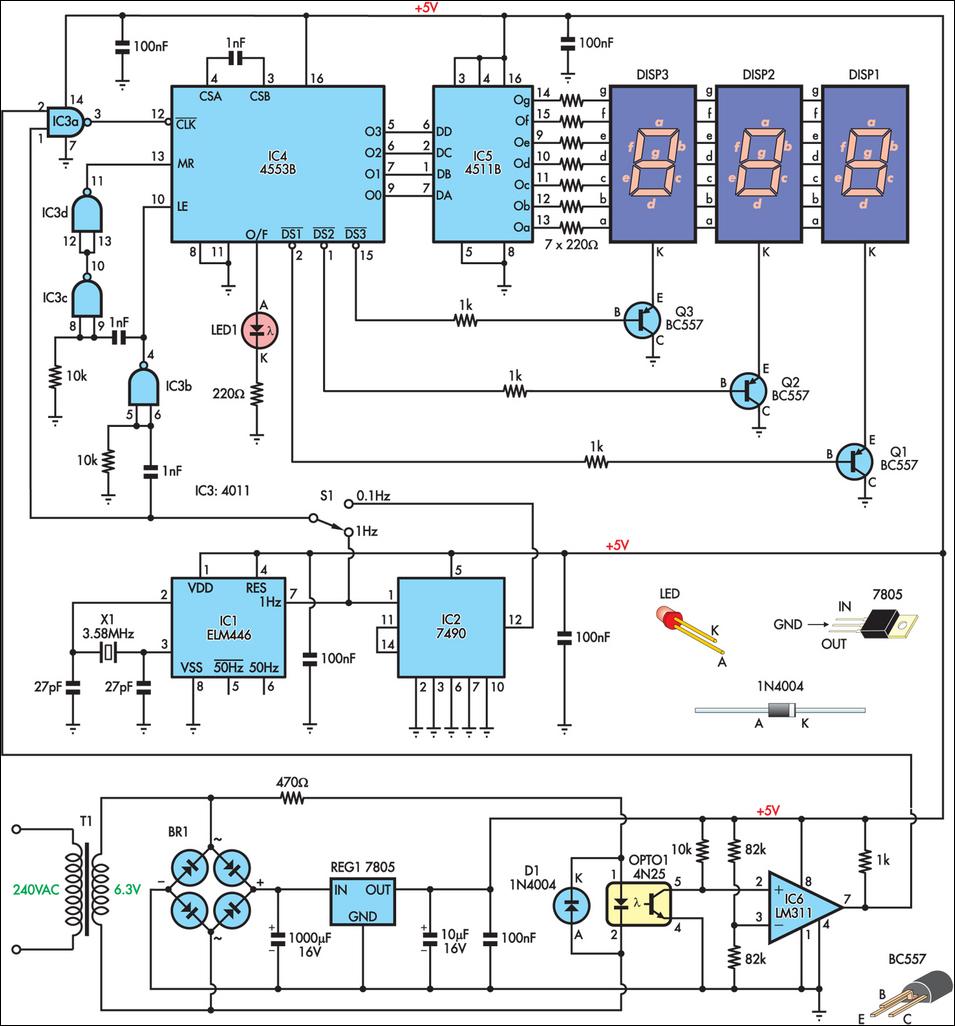
This is a simple frequency counter designed to monitor the 240VAC mains supply. It has a frequency range of 0-999Hz, making it suitable for use with 400Hz equipment as well. Standard TTL/CMOS logic is employed for the counters and display drivers, while an ELM446 (IC1) generates accurate 1Hz pulses for gating. The device utilizes a 3.579545MHz crystal for its timebase, which is commonly found in TV and video circuits as well as on older PC motherboards.
The frequency counter circuit operates by measuring the frequency of the input AC signal from the mains supply. It is capable of displaying frequencies between 0 and 999Hz, which covers the standard 50Hz or 60Hz mains frequency and extends to 400Hz, often used in aviation and military applications.
The heart of the circuit is the ELM446 integrated circuit, which functions as a pulse generator. This IC is responsible for converting the input frequency signal into a series of precise 1Hz pulses. These pulses act as a gating signal, allowing the frequency counter to accurately count the number of cycles of the input signal over a defined period.
TTL (Transistor-Transistor Logic) and CMOS (Complementary Metal-Oxide-Semiconductor) technologies are utilized for the counter and display drivers, ensuring compatibility and reliability in operation. The use of these logic families allows for low power consumption and high-speed operation, which is critical for accurate frequency measurement.
The 3.579545MHz crystal oscillator serves as the timebase for the device. This frequency is derived from a standard television crystal, which provides a stable reference for timing operations within the circuit. The stability of the oscillator is crucial for maintaining accurate frequency measurements, as any drift in the oscillator frequency could lead to errors in the displayed frequency.
Overall, this frequency counter design is a practical solution for monitoring AC mains frequencies and is versatile enough to handle higher frequency applications, making it suitable for various industrial and technical uses.Here is a simple frequency counter designed to monitor the 240VAC mains supply. It as a frequency range of 0-999Hz, so it could also be used with 400Hz equipment. Standard TTL/CMOS logic is employed for the counters and display drivers, while an ELM446 (IC1) generates accurate 1Hz pulses for gating. This device utilizes a 3. 579545MHz crystal for i ts timebase, as commonly found in TV and video circuits and even on old PC motherboards. 🔗 External reference
The frequency counter circuit operates by measuring the frequency of the input AC signal from the mains supply. It is capable of displaying frequencies between 0 and 999Hz, which covers the standard 50Hz or 60Hz mains frequency and extends to 400Hz, often used in aviation and military applications.
The heart of the circuit is the ELM446 integrated circuit, which functions as a pulse generator. This IC is responsible for converting the input frequency signal into a series of precise 1Hz pulses. These pulses act as a gating signal, allowing the frequency counter to accurately count the number of cycles of the input signal over a defined period.
TTL (Transistor-Transistor Logic) and CMOS (Complementary Metal-Oxide-Semiconductor) technologies are utilized for the counter and display drivers, ensuring compatibility and reliability in operation. The use of these logic families allows for low power consumption and high-speed operation, which is critical for accurate frequency measurement.
The 3.579545MHz crystal oscillator serves as the timebase for the device. This frequency is derived from a standard television crystal, which provides a stable reference for timing operations within the circuit. The stability of the oscillator is crucial for maintaining accurate frequency measurements, as any drift in the oscillator frequency could lead to errors in the displayed frequency.
Overall, this frequency counter design is a practical solution for monitoring AC mains frequencies and is versatile enough to handle higher frequency applications, making it suitable for various industrial and technical uses.Here is a simple frequency counter designed to monitor the 240VAC mains supply. It as a frequency range of 0-999Hz, so it could also be used with 400Hz equipment. Standard TTL/CMOS logic is employed for the counters and display drivers, while an ELM446 (IC1) generates accurate 1Hz pulses for gating. This device utilizes a 3. 579545MHz crystal for i ts timebase, as commonly found in TV and video circuits and even on old PC motherboards. 🔗 External reference
